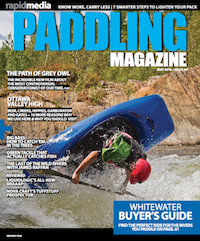I have many wonderful early camping memories, but they all seem to retire to a series of sad, soggy tents. To puddles in the corners, jammed zippers, non-stormproof storm flies, and admonitions of, “Don’t touch the walls!”
These family shelters had high dome ceilings (well, high to a kid, anyway), door mat aprons for your sneakers, and roomy square footage to accommodate four damp sleeping bags with ease. But the spindly tent pegs may as well have been licorice whips (they soon adopted equally bendy shapes), and the beast required its own canoe pack.
It wasn’t until I was much older that I began to discover the pleasures of camping and traveling with ultralight tents. Overwhelmed with the possibilities, I tried bivy sacks and exotic tent-shelters requiring hiking poles and an engineering degree to erect—anything to shave a few ounces. Before long, however, I began to miss the luxuries of a larger tent: double doors that didn’t necessitate steamrolling your partner for late night relief; vestibules to keep gear dry; enough floor space to permit sprawled arms and legs.
I began seeking out a tent that was both spacious and lightweight—a design that would offer as much a pleasure at camp as it did on the portage trail. Today, there are many such shelters. Tent manufacturers make use of high-tech materials—silicone-impregnated ultralight nylon, carbon fiber tent poles—so that, now, three is the new two. What I mean is, two campers no longer need to squeeze into a euphemistically rated “two-person” tent; modern three-person shelters are as light or lighter than the two-man tents of yesteryear.
As with any design, however, there are trade-offs. An ultralight, ultra-capacious camping Hilton is not built for the abuse some heavier tents can withstand. You’ll need to take care not to tear tissue-thin fabrics and always use a ground sheet if you want these beauties to last for many years. And my quest lead me to some shelters that fit all the other criteria, but simply weren’t sturdy enough for pitching in a gale on exposed, treeless shoreline.
At last, I found the Copper Spur UL 3 from Big Agnes. UL stands for ultralight, and the Copper Spur is: weighing just 4 pounds packed. The 44-square-foot floor and vertical walls could certainly accommodate three people in comfort, making the weight-per-person a scant 21 ounces. But my camping partner and I prefer the luxury of sharing all that space between the two of us, with heaps of room left over for gear and lounging on foul weather days. Add two vestibules and it’s all the room you’ll ever need, and then some.
Just as importantly, I love the Copper Spur’s nylon half-walls and mesh canopy—perfect for keeping blowing sand out, while enabling excellent ventilation and stargazing on clear nights. The full fly keeps me dry in heavy rain, and the hub pole system makes for fast and simple set-up or take-down. Finally, paddle camping on granite islands and treeless tundra, the Copper Spur’s freestanding design and network of well-placed guylines enable bombproof erections, making all tent memories happy ones.
$499.95 | bigagnes.com
 This gear review first appeared in the May issue of Paddling Magazine. To read more from Paddling Magazine, click here.
This gear review first appeared in the May issue of Paddling Magazine. To read more from Paddling Magazine, click here.



